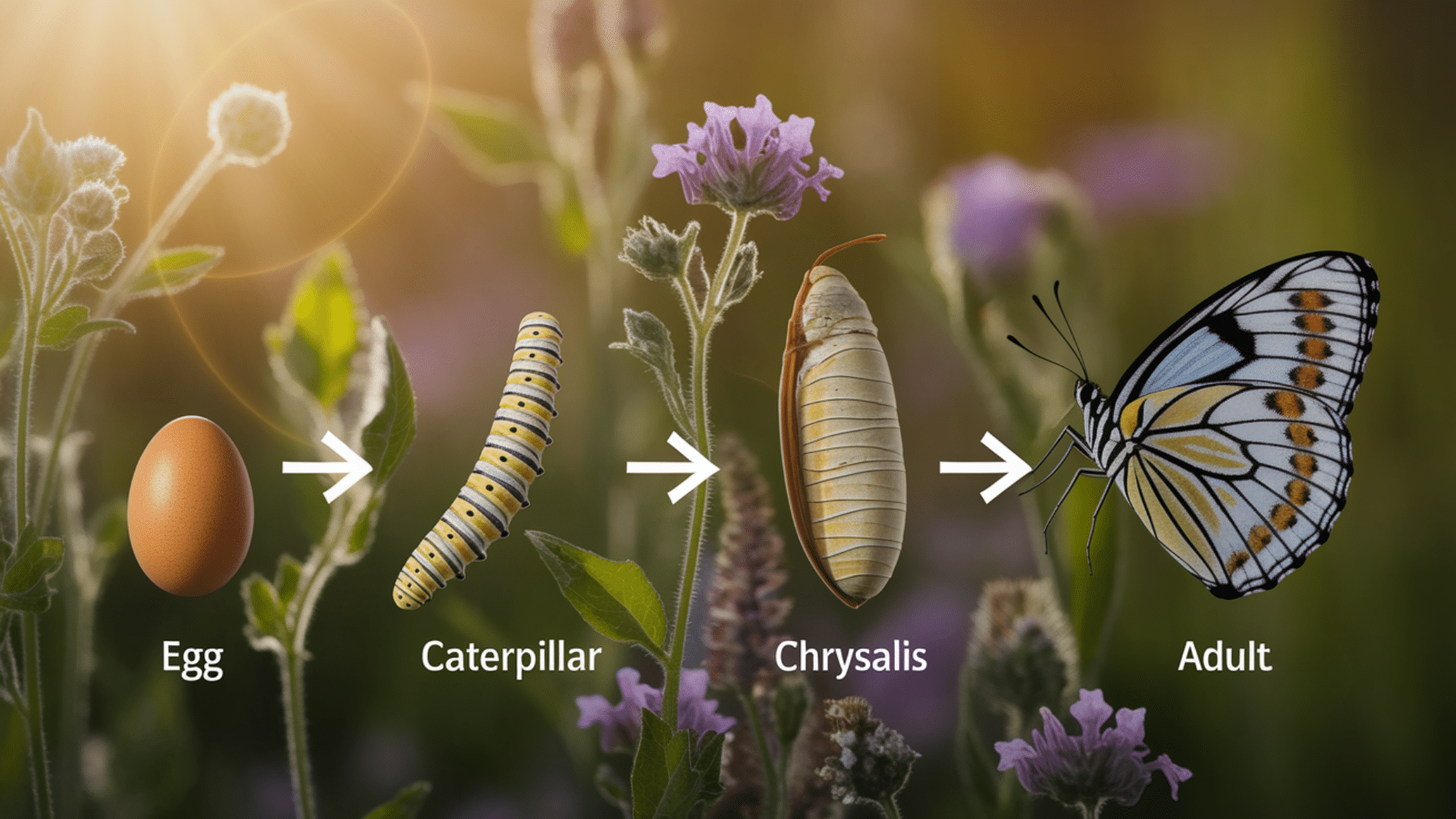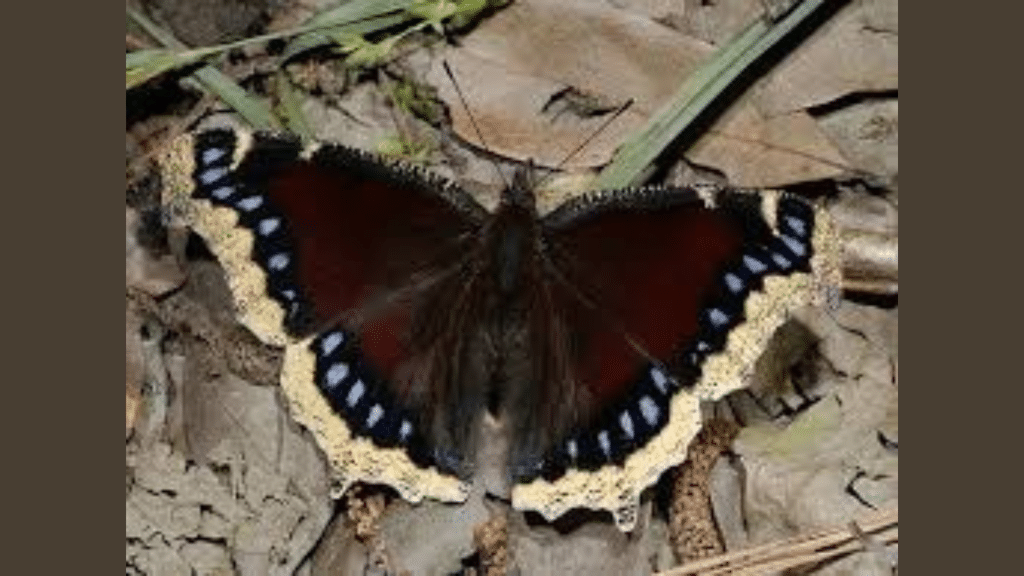Have you ever walked through a quiet forest or a sunny park and seen a big, dark butterfly with yellow edges on its wings?
Well, that might have been a Mourning Cloak butterfly! It’s one of the toughest and most beautiful butterflies in the wild.
So here, you will learn what makes the Mourning Cloak so special, how it looks, lives, and where it’s found in detail.
| Attribute | Details |
|---|---|
| Scientific Name | Nymphalis antiopa |
| Common Name | Mourning Cloak |
| Origin of Name | Named for its dark wings with creamy yellow edges, resembling a mourning cloak |
| Alternate Name (UK) | Camberwell Beauty |
| Reason for the UK Name | First spotted in Camberwell, a district in London |
| Notable Trait | Exceptionally long lifespan for a butterfly |
| Lifespan | Up to 10 or 11 months |
What Does It Look Like?
The Mourning Cloak is a fairly large butterfly with a wingspan of about 3 to 4 inches.
Its wings are dark brown with light yellow edges. Near the edges, there is a row of shiny blue spots.
These bright spots help deter predators by making the wings look like big, watchful eyes.
When its wings are closed, the butterfly looks like a dead leaf. This clever disguise helps it hide from birds and other animals.
Caterpillar Stage
The caterpillar stage is equally striking. It’s mostly black and covered in spiky hairs, with red-orange dots running down its back.
These caterpillars are often seen crawling together in groups, feeding on leaves.
What is the Life Cycle of a Mourning Cloak?

Here’s How It Works
- Females lay eggs on trees like willow, elm, aspen, cottonwood, or birch.
- The eggs start green and turn gray over time.
- When they hatch, the caterpillars eat leaves and grow fast, molting several times.
- They form a chrysalis that blends into the environment.
- About two weeks later, the adult butterfly comes out.
This process repeats once or twice a year, depending on the climate.
What Do They Eat and How Do They Behave?
Mourning Cloak butterflies are different from many other butterflies in terms of diet and daily habits. They don’t visit flowers as much as other butterflies.
Instead, they like tree sap, especially from willows, elms, and poplars. They also enjoy rotting fruit. You can often spot them feeding on sap from woodpecker holes or cracked tree bark.
Males are territorial. They choose sunny spots, such as open trails or hillsides, and defend them from other butterflies. This helps them attract a mate.
These butterflies also take a break during the hot summer months, entering a resting state called “aestivation.” When cooler temperatures return in late summer or early fall, they become active again.
Scientific Classification of the Mourning Cloak Butterfly
Here’s how scientists classify the Mourning Cloak butterfly:
- Kingdom: Animalia: The Mourning Cloak butterfly is an animal, belonging to the kingdom of all multicelled organisms that obtain nutrients by ingestion.
- Phylum: Arthropoda: It is part of the phylum Arthropoda, which includes all invertebrates characterized by jointed legs and exoskeletons, including insects, spiders, and crustaceans.
- Subphylum: Hexapoda: This subphylum encompasses all insects, characterized by their six legs and three-part body.
- Class: Insecta: Mourning Cloaks are insects, with the typical insect features: three body segments (head, thorax, abdomen), six legs, and usually two pairs of wings.
- Infraclass: Neoptera: Neoptera includes insects that can fold their wings over their abdomen, which is true for most butterflies and moths.
- Subclass: Pterygota: Pterygota encompasses all winged insects, distinguishing them from the primitive, wingless insects.
- Order: Lepidoptera: This is the order of butterflies and moths, known for their large, scaly wings and coiled proboscis.
- Superfamily: Papilionoidea: Papilionoidea is the superfamily that includes all true butterflies, as opposed to moths.
- Family: Nymphalidae: The Mourning Cloak is a member of the brush-footed butterfly family, named for their reduced front legs that are often not used for walking.
- Subfamily: Nymphalinae: This subfamily includes many well-known butterflies, such as admirals and anglewings.
- Tribe: Nymphalini: A group within Nymphalinae that includes checkerspots, anglewings, and the Mourning Cloak.
- Genus: Nymphalis: This genus includes several species of anglewings and the Mourning Cloak.
- Species: Nymphalis antiopa: The scientific name for the Mourning Cloak butterfly, first described by Linnaeus in 1758.
Why They Matter and Cool Things to Know
The Mourning Cloak is more than just pretty wings:
- Helps Plants Early in Spring: A study in Oecologia (Goulson et al., 2008) found that because they fly early, mourning cloaks help pollinate spring plants.
- Survive Freezing Winters: A paper in the Journal of Insect Physiology (Storey & Storey, 1988) showed they make natural antifreeze in their bodies!
- Not in Danger: Their conservation status is g5—this means they’re secure and not at risk of extinction.
Last but not least, the mourning cloak butterfly is more than just a flash of color in the woods. It’s a survivor, an early pollinator, and a sign of nature’s quiet strength. If you are out hiking or relaxing in your backyard, spotting one is a special moment.
Frequently Asked Questions
Is the Mourning Cloak Active at Night or During the Day?
It is diurnal, meaning it is active during the day. It spends sunny hours feeding, basking in the sun, or defending its territory.
Can You Raise Mourning Cloak Butterflies at Home?
Yes, some people raise them in butterfly kits or rearing containers, especially for educational purposes. Make sure to release them after emergence.
Do Mourning Cloak Butterflies Make Any Sound?
No, like most butterflies, they don’t make audible sounds. They communicate mostly through visual cues and chemical signals (pheromones).















